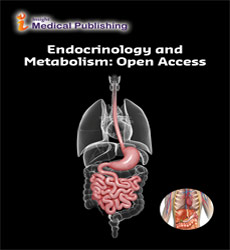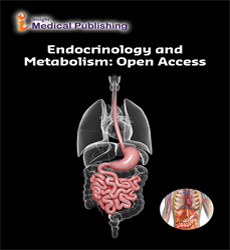The Influence of Carbohydrate in Foods and Beverages for Infants and Adults
1Department of Medical Research, Tokushima University, Tokushima, Japan
2Japan Low Carbohydrate Diet Promotion Association, Kyoto, Japan
- *Corresponding Author:
- Hiroshi Bando
Department of Medical Research
Tokushima University
Tokushima, Japan
Tel: +81-90-3187-2485
E-mail: pianomed@bronze.ocn.ne.jp
Received Date: February 17, 2020; Accepted Date: March 2, 2020; Published Date: March 9, 2020
Citation: Bando H (2020) The Influence of Carbohydrate in Foods and Beverages for Infants and Adults. Insights Med Phys Vol.4 No.1:1.
Copyright: © 2020 Bando H. This is an open-access article distributed under the terms of the Creative Commons Attribution License, which permits unrestricted use, distribution, and reproduction in any medium, provided the original author and source are credited.
Editorial
When looking back the human history for 7 million years, foods have been mostly the meat and bones of the animals [1]. Their elements were proteins and lipids, and carbohydrate intake was rare. The fight against hunger lasted for long and blood glucose level had been maintained low. During hunting and life-threatening stress, it was necessary to raise blood glucose, but opportunity to lower blood glucose was rare [2].
However, 10,000 years ago, grain cultivation began and spread, and then the population exploded in the world. The first industrial revolution was seen in the 18th century in United Kingdom (UK), and grain refining technology was prevalent. After that, there has been a change in lifestyle, then it has become a modern era of carbohydrate poisoning at present. In this article, recent topics concerning carbohydrate would be described.
Firstly, there is an increase in obesity for children which would be from excessive intake of carbohydrate. In UK, one in five children aged 4-5 years and one in three in 10-11 years are obese or overweight [3]. This rate tends to be higher for children who are brought up in rather disadvantaged backgrounds. There are lots of related factors involved, such as reduced physical activity, maternal pregnancy obesity, psychological, environmental and socioeconomic factors. These are mainly due to imbalanced energy intake and consumption. Recent reports from the UK have highlighted the actual situation that infant food content is not consistent with national recommendations.
The newest report of NHS showed that 29% of adults was classified as obese in 2019, which was increased from 26% in 2016 [3]. Furthermore, 20% of children aged 6 were classified as obese in 2019, where the prevalence became over twice as before. Additional results were that 29% of adults and 18% of children have consumed 5 or more dishes of fruit and vegetables a day.
According to the Public Health England (PHE) in UK, dietary supplements have not been clearly labelled, and have contained more sugar than usual that people can usually expected [4]. By these inappropriate situations for the younger generation, the related foods and drinks will cause obesity and metabolic disease for present children in the future. The UK government proposed the report "Childhood obesity: Action Plan" and explained the goal (action plan) to control childhood obesity by 2030 [5]. For successful management, forced restrictions on sweet foods and drinks for babies have been required without delay.
Furthermore, there is a meaningful report of the Prevention Vision for Child Health by Royal College of Pediatrics and Child Health (RCPCH) [6]. It would urge the parents to manage a recommendation. It was to feed the children not sugary food, but rather bitter-tasting vegetables. The reason would be to give the children adequate life style of eating habit, and to prevent children from developing sweet tooth. This approach was reported to avoid the caries of the tooth in the children aged 5 years with 25% reducing effect. Moreover, there are benefits of decreased risk of being obese or overweight from the excess intake of sugary food.
In 2018, PHE presented the results of the National Diet and Nutrition Survey (NDNS) [7]. It reported that the average daily intake amount of free sugars was 11.3% in the infants aged 1.5-3 years. As a reference, the Scientific Advisory Committee on Nutrition (SACN) reported the recommendation ratio for this age group [8]. The desirable value would be 5%. Thus, the actual sugar intake in this age group has been twice amount compared with the standard level.
Secondly, carbohydrates have a remarkable impact on various pathologies, even for adults. A recent topic is the relationship between carbohydrate intake and cancer [9]. Recent literature concerning diet, exercise, and other lifestyle factors and cancer risk was summarized by World Cancer Research Fund (WCRF) and American Institute for Cancer Research Recent (AICR) [10]. Among them, epidemiological data identifies associations between aspects of nutrition, diet, physical activity for one or more cancers associated with some evidence. From basic research aspect, Warburg effect has been known as the predominant use of glucose anaerobically by cancer cells [11].
On the other hand, the relationship between sugary beverage and cancer risk has not been so studied. There has been an evidence of influence of sugary beverage to obesity risk [12]. Moreover, sugary beverage has become increased risk of many cancers [13]. In addition to the obesity and fat pathways, related mechanism concerning sugary beverages and cancer may be from changed glucose variability and insulin resistance. These are influenced also by glucose absorption degree, increased glycemic index, glycemic load and so on [14]. These phenomena have been found in diabetes related cancer [15], liver cell cancer (LCC) [16] and breast cancer [14].
There has been a recent report by the WCRF/AICR [13]. However, epidemiological data concerning sugary beverage and cancer risk were still limited so far. Among them, there are two conflicting reports about the relationship between breast cancer and obesity. One showed the higher risk in post-menopausal women, which includes about 950 cases from Melbourne Collaborative Cohort study [17]. In contrast, another study showed no significant correlation between them, which includes about 125 cases from Framingham Offspring Cohort Study [18].
Similar to these, there have been several controversy concerning the relationship between sugary beverage and several kinds of cancer risk [19]. They include colorectal cancer [20], pancreatic cancer [21], biliary tract and gallbladder cancer [22] and so on.
Consequently, there have been inconsistencies about the relationship between sugary beverages and cancer risk, with the necessity of further investigations. It would be crucial to investigate the relationship between those beverages and the incidence of cancer by a large cohort study associated with detail dietary product and intake evaluation.
In summary, this article described some recent topics including the role of carbohydrate in the human evolution, excessive intake of carbohydrate in infants from the reports of PHE and RCPCH, the influence of sugary beverage on the cancer risk in adults and so on. It is expected that these become the reference to develop further research in the future.
References
- Bando H (2019) The role of ketone bodies is indispensable to human life. J Clin Nutr Metab 3: 1.
- Clark JB, Bates TE, Cullingford T, Land JM (1993) Development of enzymes of energy metabolism in the neonatal mammalian brain. Dev Neurosci 15: 174-180.
- NHS, United Kingdom (2019) Statistics on Obesity, Physical Activity and Diet, England, 2019.
- Public Health England (2019) Foods and drinks aimed at infants and young children: Evidence and opportunities for action. June 2019.
- HM Government (2018) Childhood Obesity: A Plan for Action.
- RCPCH (2019) Prevention Vision for Child Health by Royal College of Paediatrics and Child Health.
- PHE (2018) National Diet and Nutrition Survey. Results from Years 7-8 (combined) of the Rolling Programme (2014/15 to 2015/16).
- Scientific Advisory Committee on Nutrition (SACN) (2015) Carbohydrates and Health. The Stationery Office (TSO) of PAE. www.tsoshop.co.uk. Crown copyright. ISBN: 978 0 11 708284 7
- Maino Vieytes CA, Taha HM, Burton-Obanla AA, Douglas KG, Arthur AE (2019) Carbohydrate nutrition and the risk of cancer. Current Nutrition Reports 8: 230-239.
- Wiseman MJ (2018) Nutrition and cancer: Prevention and survival. Br J Nutr 14: 1-7.
- Oliveira CLP, Mattingly S, Schirrmacher R, Sawyer MB, Fine EJ, et al. (2018) A nutritional perspective of ketogenic diet in cancer: A narrative review. J Acad Nutr Diet 118: 668-688.
- Malik VS, Pan A, Willett WC, Hu FB (2013) Sugar-sweetened beverages and weight gain in children and adults: A systematic review and meta-analysis. Am J Clin Nutr 98: 1084-1102.
- World Cancer Research Fund/American Institute for Cancer Research (2018) Diet, Nutrition, Physical Activity and Cancer: A Global Perspective .Continuous Update Project Expert Report.
- Schlesinger S, Chan DSM, Vingeliene S, Vieira AR, Abar L, et al. (2017) Carbohydrates, glycemic index, glycemic load, and breast cancer risk: A systematic review and dose-response meta-analysis of prospective studies. Nutr Rev 75: 420-441.
- Choi Y, Giovannucci E, Lee JE (2012) Glycaemic index and glycaemic load in relation to risk of diabetes-related cancers: A meta-analysis. Br J Nutr 108: 1934-1947.
- Laguna JC, Alegret M, Roglans N (2014) Simple sugar intake and hepatocellular carcinoma: Epidemiological and mechanistic insight. Nutrients 6: 5933-5954.
- Hodge AM, Bassett JK, Milne RL, English DR, Giles GG (2018) Consumption of sugar-sweetened and artificially sweetened soft drinks and risk of obesity-related cancers. Public Health Nutr 21: 1618-1626.
- Makarem N, Bandera EV, Lin Y, Jacques P, Hayes RB, et al. (2018) Consumption of Sugars, Sugary Foods and Sugary Beverages in Relation to Adiposity-Related Cancer Risk in the Framingham Offspring Cohort(1991-2013). Cancer Prev Res (Phila) 11: 347-358.
- Boyle P, Koechlin A, Autier P (2014) Sweetened carbonated beverage consumption and cancer risk: Meta-analysis and review. Eur J Cancer Prev 23: 481-490.
- Schwingshackl L, Schwedhelm C, Hoffmann G , Sven K, Preterre AL, et al. (2018) Food groups and risk of colorectal cancer. Int J Cancer 142: 1748-1758.
- Navarrete-Muñoz EM, Wark PA, Romaguera D, Nirmala BP, Michaud D, et al. (2016) Sweet-beverage consumption and risk of pancreatic cancer in the European Prospective Investigation into Cancer and Nutrition (EPIC). Am J Clin Nutr 104: 760-768.
- Larsson SC, Giovannucci EL, Wolk A (2016) Sweetened beverage consumption and risk of biliary tract and gallbladder cancer in a prospective study. J Natl Cancer Inst 108: djw125.

Open Access Journals
- Aquaculture & Veterinary Science
- Chemistry & Chemical Sciences
- Clinical Sciences
- Engineering
- General Science
- Genetics & Molecular Biology
- Health Care & Nursing
- Immunology & Microbiology
- Materials Science
- Mathematics & Physics
- Medical Sciences
- Neurology & Psychiatry
- Oncology & Cancer Science
- Pharmaceutical Sciences
